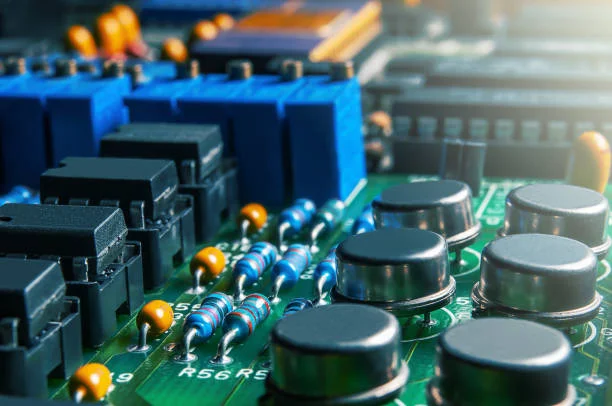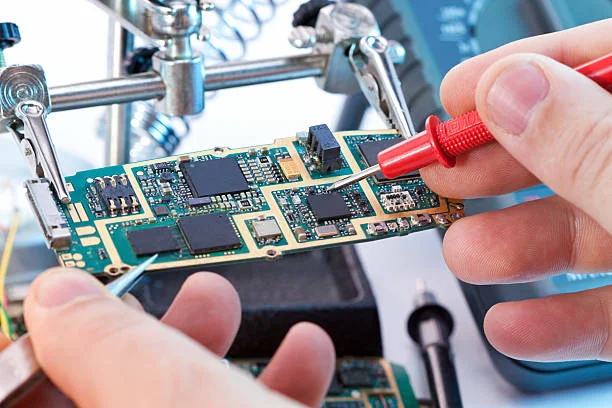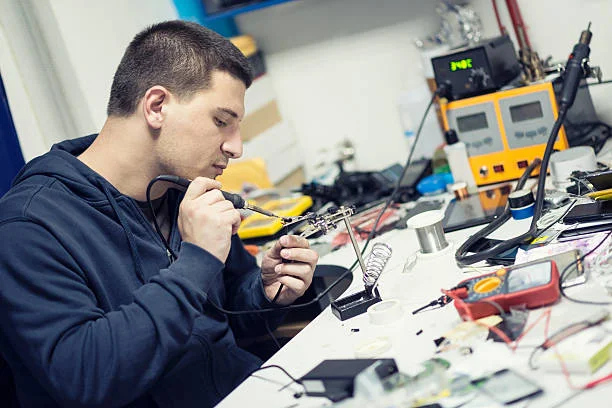Capacitors are important components in circuits that store and release electrical energy. Whether you’re a hobbyist or a seasoned professional, mastering the art of measuring capacitors is critical for troubleshooting, designing circuits, or simply ensuring optimal performance.

Let’s explore the techniques and tools needed to accurately measure capacitors and demystify this important aspect of electronic engineering.
What is a Capacitor?

A capacitor is an electronic component that stores electrical energy in an electric field. It consists of two conductive plates separated by an insulating material called a dielectric. When a voltage is applied across the plates, opposite charges accumulate on them, creating an electric field between them. This stores energy in the form of electric potential energy.
Capacitors are commonly used in electronic circuits for various purposes, including filtering, smoothing, energy storage, coupling, and timing. They come in various types, such as electrolytic capacitors, ceramic capacitors, tantalum capacitors, and film capacitors, each with its own characteristics and applications. Capacitors are characterized by their capacitance, measured in farads (F), which indicates how much charge it can store per unit voltage.
Classification of Capacitors

Capacitors can be classified based on their type and purpose. The main classifications include fixed capacitors and variable capacitors.
Fixed capacitors include electrolytic capacitors, ceramic capacitors, metallized polyester film capacitors, etc., suitable for different electronic applications. Variable capacitors can adjust the capacitance value as needed, including variable voltage capacitors and adjustable capacitors.
In addition, there are some special types of capacitors, such as ferroelectric capacitors and supercapacitors, with special properties and application scenarios. Selecting the appropriate type of capacitor depends on the specific circuit design needs and application requirements.
Tools for Measuring Capacitors
There are several tools commonly used for measuring capacitors:
Multimeter
Multimeters are versatile tools that can measure capacitance, among other electrical properties. They typically have a capacitance measurement mode and can provide accurate readings of capacitor values.
LCR Meter
LCR (Inductance, Capacitance, Resistance) meters are specialized instruments designed specifically for measuring the electrical properties of passive components, including capacitors. They offer high precision and accuracy in capacitance measurements.
Oscilloscope
Oscilloscopes can indirectly measure capacitance by observing the charging and discharging behavior of a capacitor in an RC circuit. By analyzing the waveform, one can estimate the capacitance value based on the time constant.
Component Tester
Component testers or transistor testers equipped with a capacitance measurement function can quickly measure capacitor values. These testers are portable and convenient for on-the-spot measurements.
Bridge Circuit
Bridge circuits, such as Wheatstone bridges or Schering bridges, can be used for precise capacitance measurements, especially in laboratory settings. They compare the unknown capacitance with a known reference capacitance to determine the value accurately.
Depending on the accuracy required, the availability of equipment, and the specific application, one or more of these tools can be employed to measure capacitor values effectively.
How to Measure Capacitor?

Measuring a capacitor involves determining its capacitance, which is a measure of its ability to store electrical charge. Here’s a basic step-by-step guide:
Choose the Right Equipment
You’ll need a multimeter capable of measuring capacitance. Most modern multimeters have this function. Alternatively, you can use an LCR meter or a dedicated capacitor analyzer for more accurate measurements.
Safety Precautions
Before measuring a capacitor, ensure it’s discharged to avoid any electrical shock. If it’s connected to a circuit, disconnect power and use a resistor to discharge it safely.
Select Measurement Range
If using a multimeter, set it to the capacitance (farads, microfarads, or picofarads) range appropriate for the capacitor you’re measuring. Choose a range higher than the expected capacitance to avoid damaging the meter.
Connect the Capacitor
Connect the leads of the multimeter or LCR meter to the capacitor terminals. Ensure correct polarity if the capacitor is polarized (has a positive and negative lead).
Read the Measurement
The meter will display the capacitance value in farads (F), microfarads (μF), or picofarads (pF), depending on the range and the capacitor’s value.
Interpret the Reading
Compare the measured capacitance with the rated value of the capacitor. Capacitors can degrade over time, so the measured value may differ slightly from the labeled value. However, significant deviations could indicate a faulty or deteriorating capacitor.
Repeat and Verify
If necessary, repeat the measurement to ensure accuracy. It’s a good practice to measure capacitors out of circuit whenever possible for more precise readings.
Disconnect and Store Safely
After measuring, disconnect the capacitor and store it safely. If it’s part of a circuit, reconnect it securely.
Summary

In summary, measuring a capacitor involves determining its capacitance, which can be done in a variety of ways, including a multimeter, LCR meter, or a specialized capacitor analyzer. Each method has its advantages and limitations, but with the proper technique and understanding, anyone can effectively measure capacitors.
Remember to discharge capacitors before testing to avoid shock, and always double-check connections and settings for accurate readings. By mastering capacitor measurement techniques, you’ll gain valuable skills that can be used in troubleshooting, designing circuits, and ensuring the reliability of electronic systems.




















